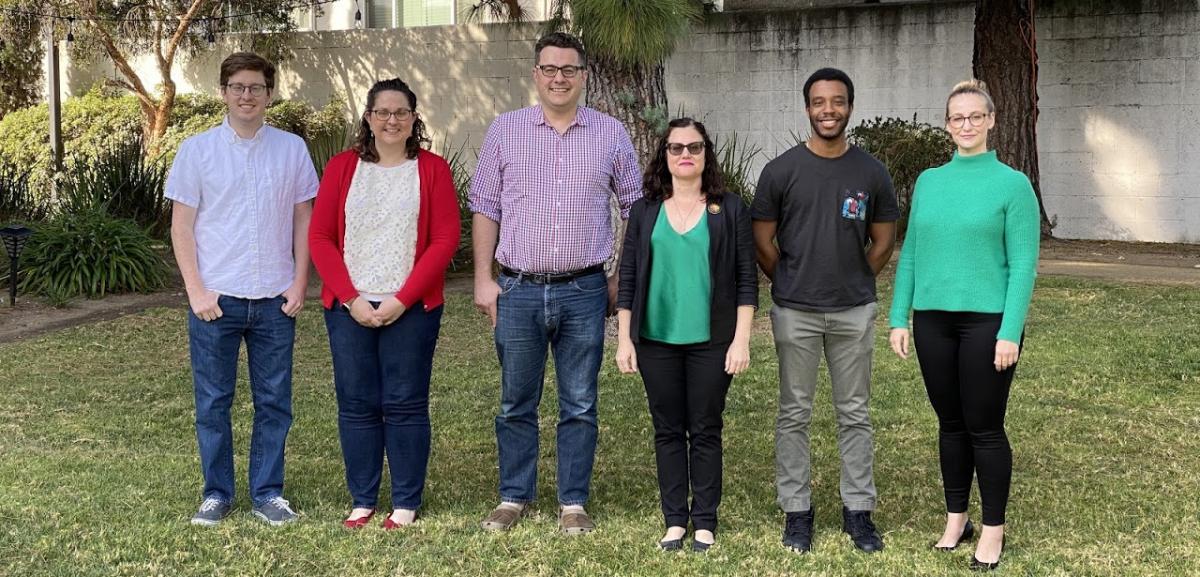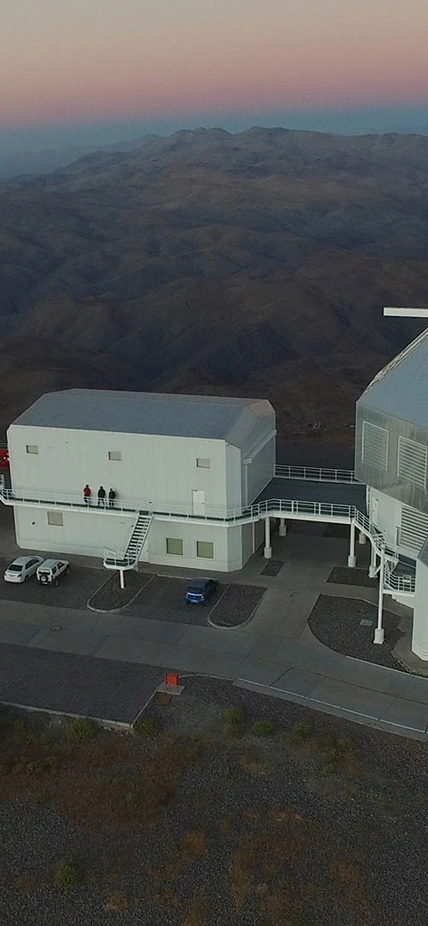Washington, DC—A team of Carnegie astronomers was awarded $1.4 million from the Heising-Simons Foundation to develop an ambitious and versatile infrared spectrograph for the Magellan telescopes at Carnegie’s Las Campanas Observatory in Chile that will enable breakthroughs in understanding cosmology, galaxy evolution, and exoplanet atmospheres.
Spearheaded by instrument lead Nicholas Konidaris and project scientists Andrew Newman and Gwen Rudie of the Carnegie Observatories, the project, called the Magellan Infrared Multiobject Spectrograph, or MIRMOS, will expand researchers’ view of the sky in the infrared wavelengths of the spectrum and significantly advance the science that is possible using current infrared spectroscopic tools.
“In astronomy, breakthroughs are driven by technological advancements,” said Konidaris. “MIRMOS will enable leaps forward in answering fundamental questions at the forefront of astronomy.”
The team leaders, along with Carnegie postdoc Alicia Lanz and University of Southern California graduate student Jason Williams, describe MIRMOS as a “Swiss Army knife,” because of the flexibility of its design, which will enable breakthroughs on several astrophysical mysteries.
“The infrared wavelengths are key to many of the most active areas of inquiry in astronomy,” said Rudie. “Infrared light can reveal the early universe’s first structures and the formation and evolution of multiple generations of galaxies, including the breakneck galaxy growth that occurred 10 billion years ago, as well as the atmospheres of distant worlds.”
 This information will enable astronomers to answer fundamental questions about galaxy formation such as how primordial galaxies changed their surroundings, whether a galaxy’s birthplace determines its destiny, and how galaxies grow within cosmic ecosystems—enormous reservoirs of gas that extend far beyond their visible starlight. It will also enable a novel understanding of exoplanetary atmospheres, which will be key to understanding the evolution of planetary systems beyond our own and to building a framework for detecting life elsewhere.
This information will enable astronomers to answer fundamental questions about galaxy formation such as how primordial galaxies changed their surroundings, whether a galaxy’s birthplace determines its destiny, and how galaxies grow within cosmic ecosystems—enormous reservoirs of gas that extend far beyond their visible starlight. It will also enable a novel understanding of exoplanetary atmospheres, which will be key to understanding the evolution of planetary systems beyond our own and to building a framework for detecting life elsewhere.
With a large field of view, ability to record the entire near-infrared spectrum, and advanced mode-switching capabilities, MIRMOS is designed to power breakthrough astronomy.
“It will be the only spectrograph that is built to excel at both sensitive observations of faint objects like distant galaxies and at high-precision observations of bright sources, such as stars hosting exoplanets,” said Newman.
The funding from Heising-Simons will enable the development of key instrument functionalities on MIRMOS—the design and construction of one of MIRMOS’s ultra-fast cameras, which the team says will feature one-of-a-kind engineering, and of the exo-atmosphere pathfinder, led by Williams, which will deploy recent technological advances to enable astronomers to detect incredibly subtle signals of the atmospheric compositions of of distant worlds.
__________________
The Heising-Simons Foundation is a family foundation based in Los Altos and San Francisco, California. The Foundation works with its many partners to advance sustainable solutions in climate and clean energy, enable groundbreaking research in science, enhance the education of our youngest learners, and support human rights for all people.
